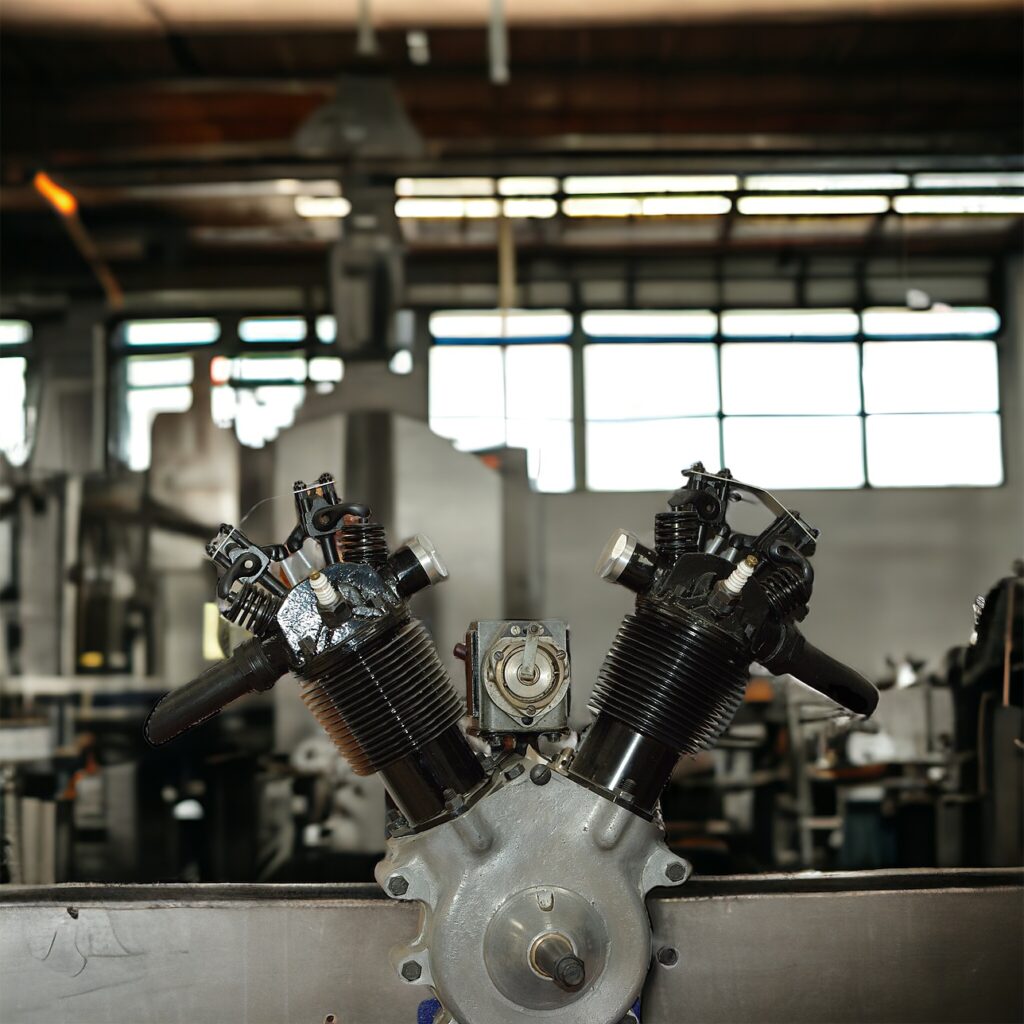HISTORY
Blackburne was a trade name of Burney and Blackburne Limited a British manufacturer of motorcycles from 1913 to 1922 at Tongham near Farnham, Surrey. They were also a major supplier of engines to other motor cycle and light car makers and continued to make these until 1937. Burney and Blackburne also made small aircraft engines.
The origins of the Blackburne motorcycle engine can be traced back to Geoffrey de Havilland who had designed (and made) a motor cycle before he became fascinated with aircraft. He sold the designs and patterns to two student friends for £5 when short of money in c1905, and they went on to form the Blackburne engine company.

A patent for adjustable belt pulleys for motorcycles dating back to 1912, shows Cecil Stanley Burney, Edward Alexander (Alec) Burney, and pioneer aviator Harold Blackburn trading as Burney and Blackburne (not Blackburn), operating from Northchurch, Berkhamsted. They were incorporated shortly afterwards as Burney and Blackburn Ltd, at which point Harold Blackburn sold his stake to the competition riders Cecil and Arthur Roberts. As a “dividend” for his investment, Blackburn was given a motorcycle and sidecar from the original production batch. Harold Blackburn used this machine to promote flying displays in Yorkshire.
Production moved to Tongham, Surrey shortly after incorporation, and they remained there throughout the war, but adverts for their engines from 1922 show a change of address to Atlas Works, Bookham, Surrey. This was the year motorcycle production ceased, and the main focus became engine manufacture. The Atlas works was 56,000 square feet by the end of the war, and is the subject of research by P. Taplee of the local history society.[4] Although there are reports of a link with Osborn Engineering Company (OEC), these were most likely just another customer for Blackburne engines.
Blackburne motorcycles performed well in the 1913 and 1914 ACU six days trials. Three 499cc Blackburne motorcycles were entered in the ACU six days trial in 1914 one ridden by John Spear Roberts (ex Motosacoche Ltd), who is named as joint applicant in a Blackburne patent of 1918. In the judges summary of the event they stated that the “Blackburne machines are also worthy of very favourable notice on account of their good engine design”. With the outbreak of the war in mid-1914, three directors of Burney and Blackburne Ltd volunteered as despatch riders, these were Cecil Burney, Alec Burney and C.Q. Roberts (also Q.A.Roberts his brother). Reporting back to the Motor Cycle later that year, Alec Burney had lost his machine when it was run over by the heavy artillery during the night. Reporting in November Cecil Burney stated that his Armstrong (hub gears) were standing up wonderfully well, but was adamant that a hand clutch (instead of the common foot clutch) was an absolute requirement. In November 1916 it was reported that the Burney brothers had received lieutenant’s commissions, Alec running a motor cycle repair base in France, and Cecil running a repair shop for engine-driven electrical lighting units for a signals station.
After the 1914-1918 war Blackburne became a major supplier of engines to motor cycle manufacturers. Some of these included, Cotton, Wolf, Excelsior, Victoria, New Scale, Verus and Sirrah, Rex and Rex Acme, Wilkin, Hoskinson, Chater Lea and OK Supreme

This list is far from complete, as research from the local history society using records at the National Motor Museum, Beaulieu discovered “11 aircraft manufacturers, 70 motor cycle makers, 24 car makers, 2 fire appliance makers, 3 agricultural machine makers and 7 lawn mower firms, all of whom used Blackburne engines built at Bookham”.
That Blackburne managed to secure so many customers for their engine in a few years after the war is a tribute to how well the engine was regarded, not least because of its excellent competition performance. The number of companies reflects the huge demand for motorcycles, although many of the companies survived only until the great depression of 1929/1930. However, in their 1932 engine catalogue Blackburne stated they were “exporting engines in large numbers to France, Belgium, Germany, Sweden, Italy, Japan, etc where they are fitted by some of the largest and best known manufacturers of quality machines”.
Blackburne engines were favoured by several manufacturers for the TT races from 1920, competing mainly against J.A.P. engined rivals in the lightweight (250cc) class, and against A.J.S. engines in the Junior (350cc) class. In the 1920 Junior TT Blackburne bikes came 2nd and 3rd. In the 1922 Lightweight TT Blackburne-engined bikes were second (Rex-Acme), fourth (Sheffield-Henderson), seventh (OK-Supreme) and ninth (Coulson), and in the Junior TT they were third (Sheffield-Henderson), fourth (Coulson), fifth (Cotton), eighth (Edmund) and ninth (Blackburne). Stanley Woods on the Blackburne-engined Cotton won the 1923 Junior TT.
Between 1923 and 1930, riders Norris, Harold Beart and Jackson achieved considerable success with Blackburne KMA, KMB racing engine and KMC sports engine powered machines.
Around 1922 Blackburne moved into aviation with their Tomtit two cylinder light aircraft engine based on the 696cc Lympne V-twin. They continued developing new and larger aircraft engines until 1926


